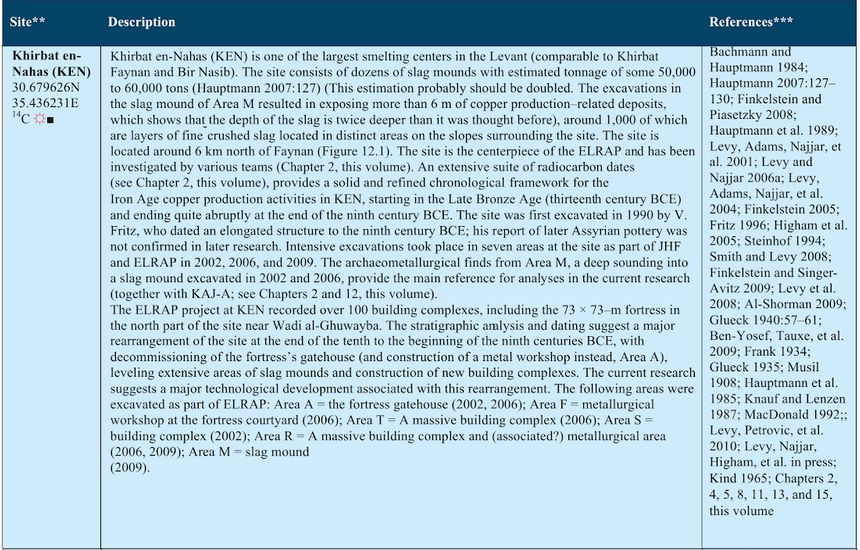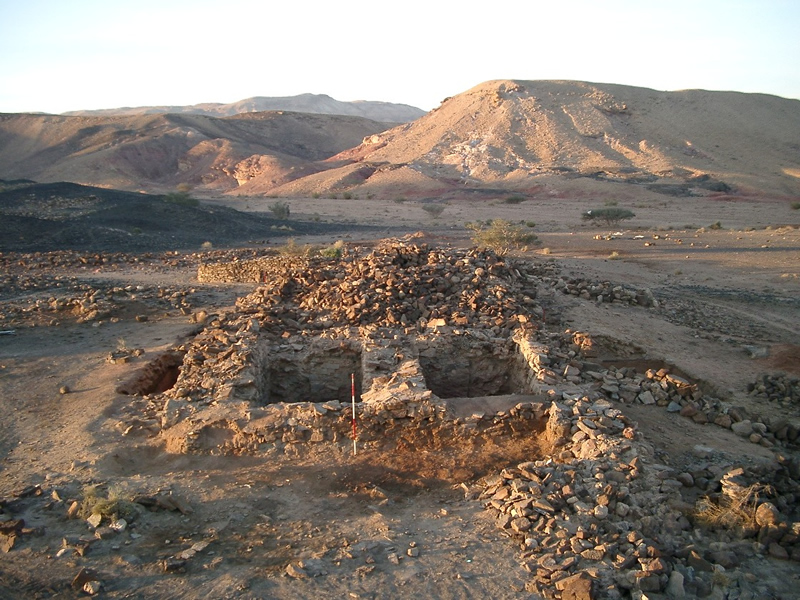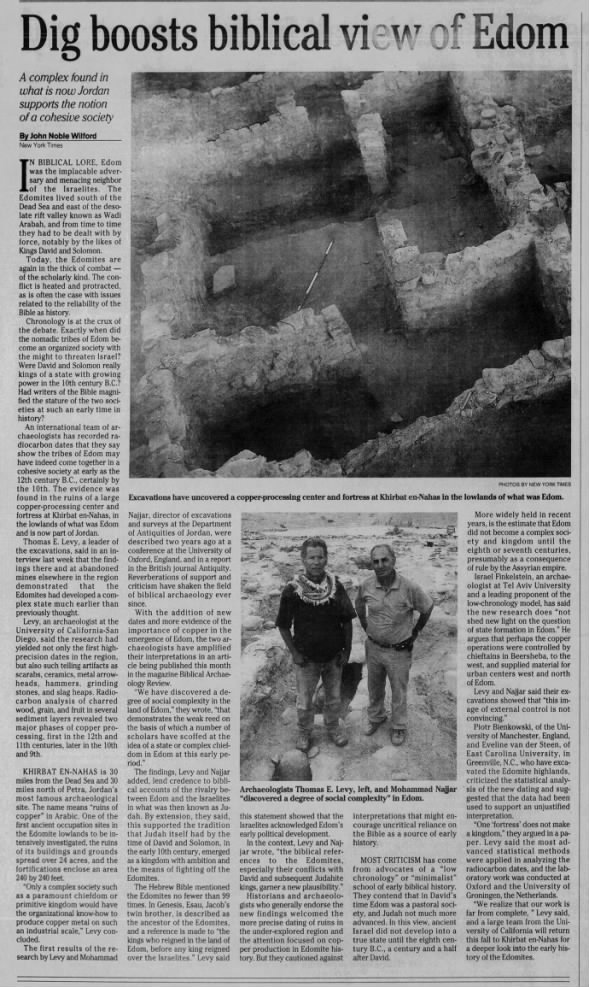|
Other Archaeological Sites / The Neolithic of the Levant (500 Page Book Online) Khirbat en-Nahas (Khirbet en-Nahas) Updated August 24th 2019
Read: Edom & Copper: The Emergence of Ancient Israel’s Rival By Thomas Levy and Mohammad Najjar Khirbat en-Nahas or Khirbet en-Nahas is one of the largest copper mining and smelting sites of the ancient world, built around 3,000 years ago.[1] It is located in Wadi Faynan between the Dead Sea and the Gulf of Aqaba, now in Jordan. There is evidence for sophisticated economic and political activity in the valley about 3,000 years ago and archaeologists think it may be the site of an early organized state.[1] Archaeologist Thomas Levy of the University of California heads a dig at Khirbat en-Nahas that has uncovered an ancient copper mining operation on a scale that he says can have been organized by only "an ancient state or kingdom."[2] It is through the ground stone tools assembled on site at Khirbat en-Nahas that much research for the understanding of Iron Age copper mining and production is being conducted.[3] [WikiPedia]
Page 774 in New Insights into the Iron Age Archaeology of Edom in Southern Jordan
Reassessing the chronology of Biblical Edom: new excavations and 14C dates from
Abstract: ... Occupation begins here in the eleventh century BC and the monumental fortress is
built in the tenth. If this site can be equated with the rise of the Biblical kingdom of Edom it can
now be seen to: have its roots in local Iron Age societies; is considerably earlier than previous
scholars assumed; and proves that complex societies existed in Edom long before the influence of
Assyrian imperialism was felt in the region from the eighth to sixth centuries BC.
Introduction: The archaeology of the Iron Age (circa 1200 – 586 BC) in the southern Levant has been fraught with controversy ever since its nineteenth century beginnings primarily because it is linked with issues concerning
the historicity of the Old Testament or Hebrew Bible. Dating events and processes of change
during the “Biblical” or Iron Age periods has been particularly problematic. The recent
application of high-precision radiocarbon dates to Iron Age archaeological strata offers a less
biased approach for establishing a reliable chronology for the region and for assessing Biblical
and ancient Near Eastern textual and archaeological data (Bruins et al 2003; Finkelstein &
Piasetsky 2003b). The archaeological evidence for the appearance of Iron Age ‘statelets’
throughout the southern Levant at the end of the Late Bronze Age (circa 1200 BC) is interwoven
with ancient Near Eastern and Biblical texts (Joffe 2002). Some of these new polities include
ancient Israel -- Judah -- Philistia and Phoenicia located west of the Jordan River; Aram in Syria and the Transjordan polities of Edom, Moab and Ammon east of the Jordan River.
The paper reports high precision radiocarbon dates from stratified
excavations at the major Iron Age metal production centre of Khirbat en-Nahas. These have
proved to be of key importance for reassessing and clarifying the evolution of the Edomite
kingdom known from biblical sources (Bartlett 1992).
Khirbat en-Nahas: The Context
Recent excavations at the Iron Age copper production centre of Khirbat en-Nahas, located in the ancient mining district of Faynan (Biblical Edom), offer a new data set for reviewing the early Iron Age (circa 1200–1000 BC) as well as later developments in the tenth-ninth centuries BC both in Transjordan and in the southern Levant as a whole. Until recently it was assumed that the establishment of settled populations in the region and the establishment of the Kingdom of Edom occurred only in the eighth through sixth centuries BC and that the rise of the Edomite state was linked to the establishment of the Assyrian empire (Bienkowski 2001; Herr & Najjar 2001; Stern 2001). This view developed as a result of the limited archaeological excavations in the region which have favoured sites on the plateau relatively far from the copper ore sources in the lowlands of Edom. In this paper we present the recent excavation results from a major stratified Iron Age Edomite lowland site that demonstrate significant settlement and copper production activities well before the seventh and sixth centuries BC based on high precision radiocarbon dates. These dates demonstrate a much earlier Iron Age occupation in Edom dating to the twelfth to ninth centuries BC when construction of massive fortifications and industrial scale metal production activities took place. Given the current debate concerning radiocarbon dating and the Iron Age of the southern Levant (Holden 2003) it is clear that the new data presented here demonstrate that a complex Iron Age polity existed in the Edomite lowlands much earlier than previously assumed.
Khirbat en-Nahas: The site
Recent investigations at Khirbat en-Nahas
|



